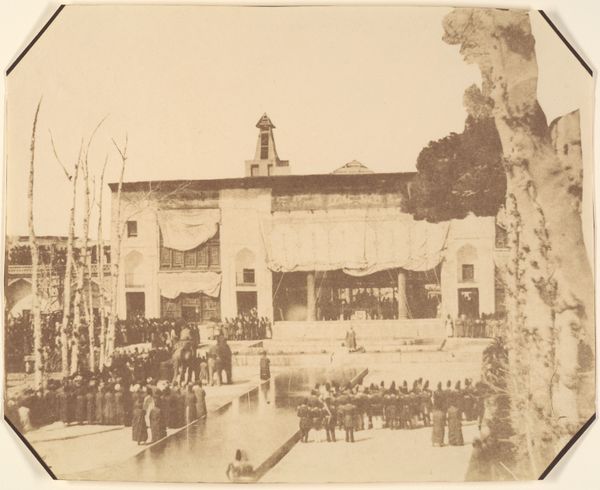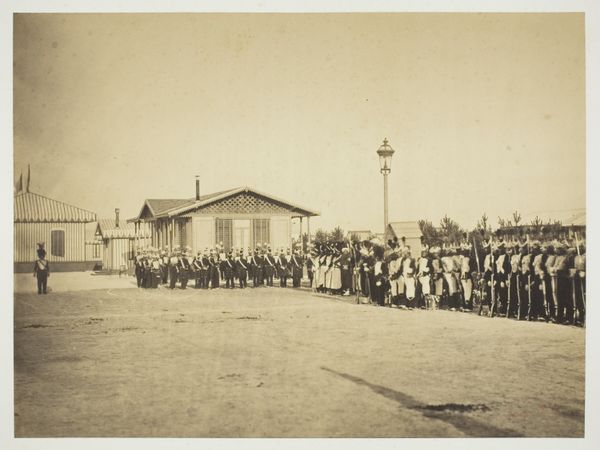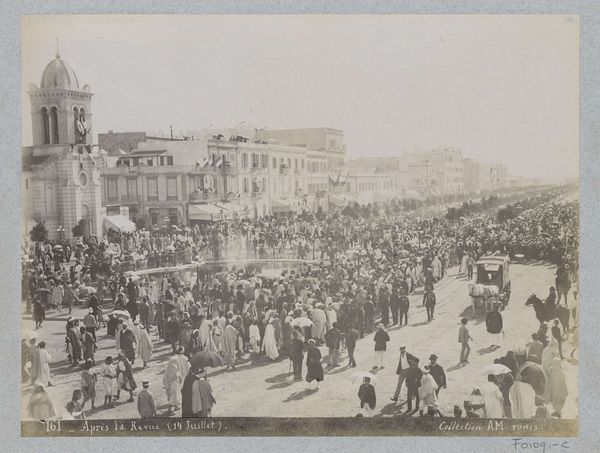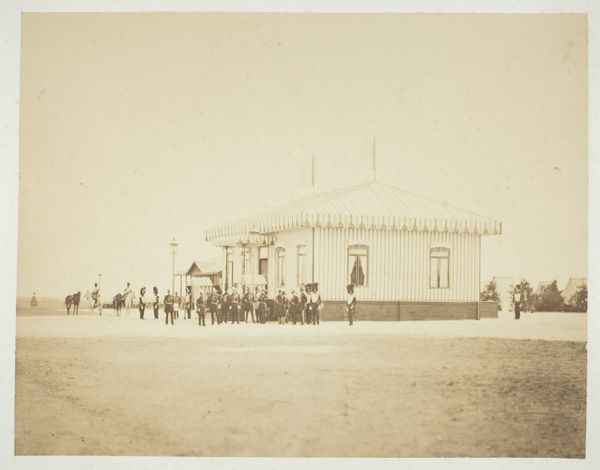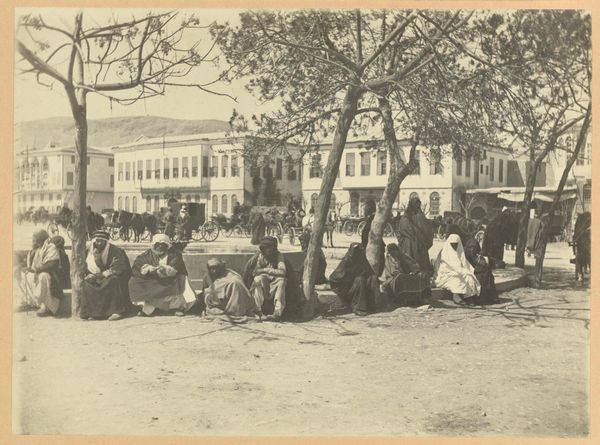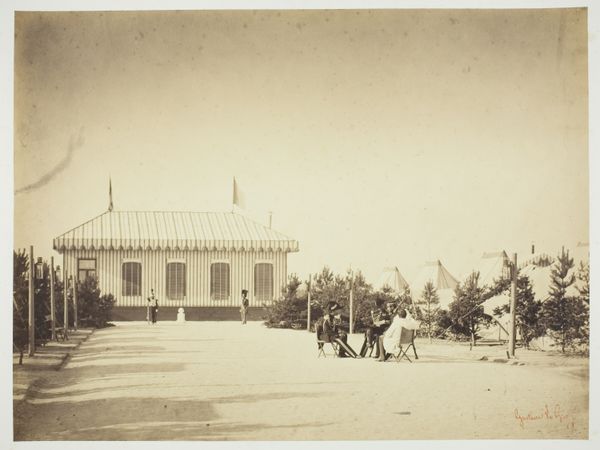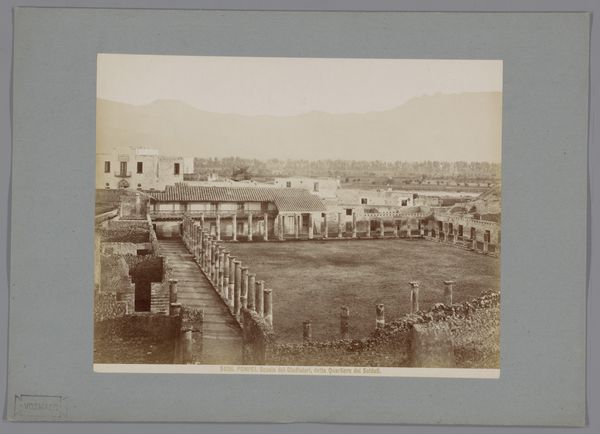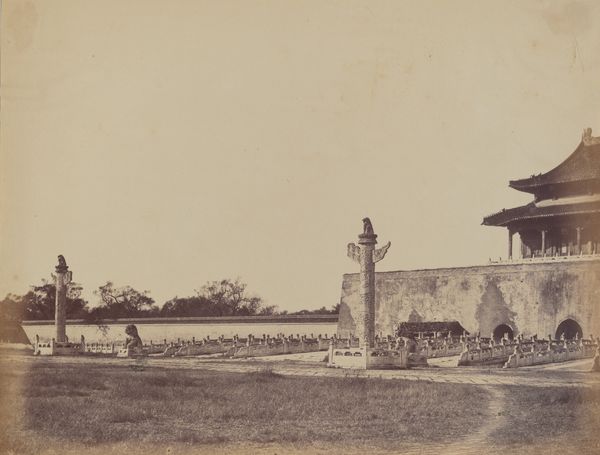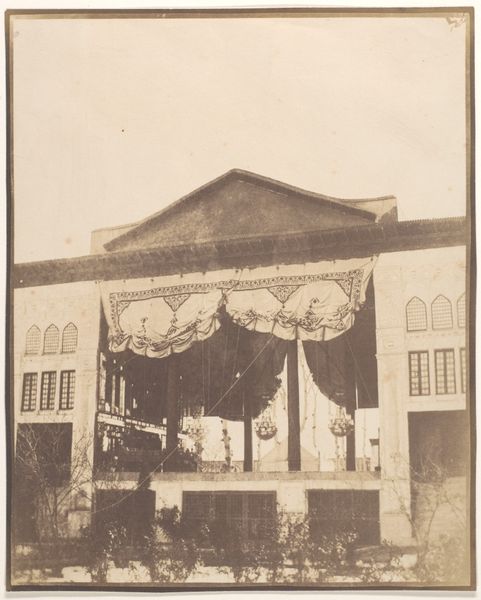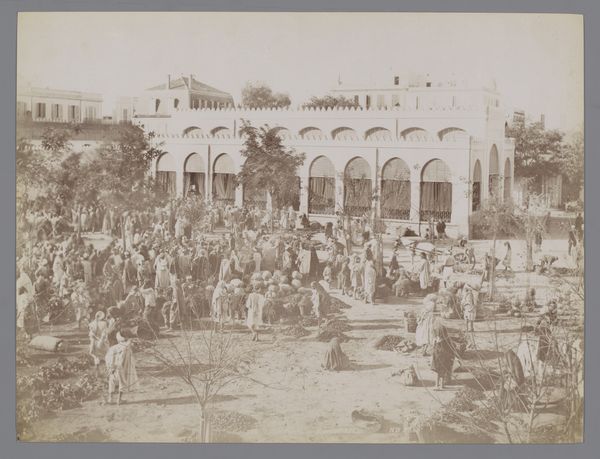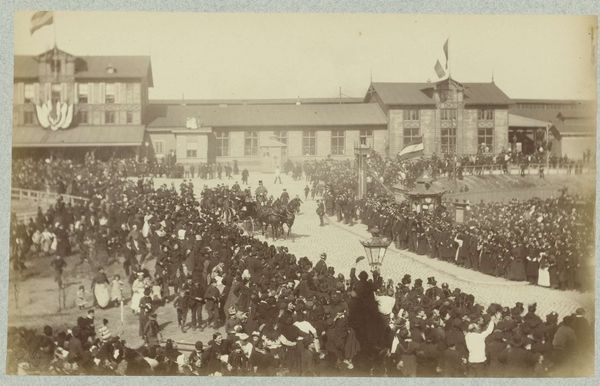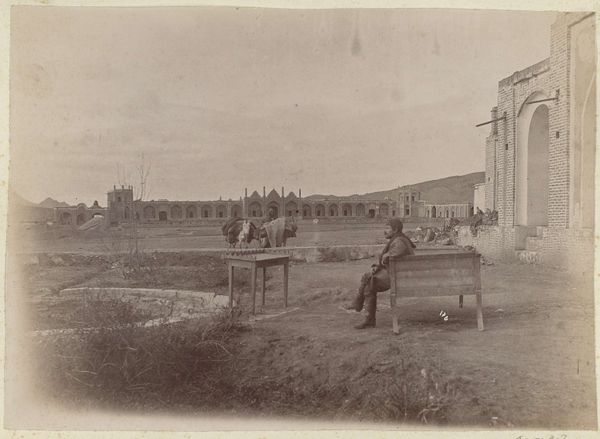![[Palace of the Shah, Paying respects to the Shah/Fete de Salam, Teheran, Iran [same as 12] ] by Luigi Pesce](/_next/image?url=https%3A%2F%2Fd2w8kbdekdi1gv.cloudfront.net%2FeyJidWNrZXQiOiAiYXJ0ZXJhLWltYWdlcy1idWNrZXQiLCAia2V5IjogImFydHdvcmtzLzVkN2RlZTEyLWQwY2YtNGY5NC04MjQ3LTk1NDhhMTgzZGE1Ni81ZDdkZWUxMi1kMGNmLTRmOTQtODI0Ny05NTQ4YTE4M2RhNTZfZnVsbC5qcGciLCAiZWRpdHMiOiB7InJlc2l6ZSI6IHsid2lkdGgiOiAxOTIwLCAiaGVpZ2h0IjogMTkyMCwgImZpdCI6ICJpbnNpZGUifX19&w=3840&q=75)
[Palace of the Shah, Paying respects to the Shah/Fete de Salam, Teheran, Iran [same as 12] ] 1840 - 1869
0:00
0:00
print, photography, architecture
# print
#
landscape
#
outdoor photograph
#
outdoor photo
#
photography
#
arch
#
19th century
#
islamic-art
#
architecture
#
realism
Copyright: Public Domain
Curator: What an ethereal quality! This photograph from sometime between 1840 and 1869, taken by Luigi Pesce, pictures the Palace of the Shah in Tehran, Iran. It almost feels like peering into another world. Editor: It does evoke a certain mystique. The composition is intriguing—the bare trees in the foreground act almost as a veil, obscuring and framing the courtyard scene. Note the strong architectural elements too, like the repetitive arches. Curator: It’s interesting how Pesce uses those stark, leafless trees. It adds a layer of melancholy to the grandeur of the palace, like winter grasping at summer. What do you suppose that gathering of people is all about? Some kind of royal ceremony? Editor: Indeed, if you follow the lines upwards, the vertical thrust of the minaret is visually striking against the lower horizontal facade with its delicate patterns. The textures, despite the photograph's age, present a very structured, formal order. The scene is clearly staged and organized. Curator: Organized, but dreamy too! I find it interesting, the choice of focus... the almost ghostly figures... everything's veiled with such dignity. Editor: Definitely. I feel the contrast of light and shadow accentuates architectural details; semiotically, the light seems to act as a revealing force that exposes details but simultaneously shrouds the gathering's human narrative within deeper shadows. Curator: Yes, that shadow lends a very distinct, old-world feel... like a memory half-faded, half-tangible. I'm swept away with the beauty of what's visible and, more so, what is subtly, respectfully obscured. Editor: Absolutely, and what's especially poignant is how, when the formal composition meets the photograph's ethereal nature, the structure and detail ultimately reveal time itself as the great compositional factor. The past is layered and textural. Curator: Well, thank you, the feeling that there is a deep understanding beyond just what is shown adds volumes to viewing it. Editor: And the invitation to contemplation provides all the intrigue necessary for appreciating art beyond face value.
Comments
No comments
Be the first to comment and join the conversation on the ultimate creative platform.
